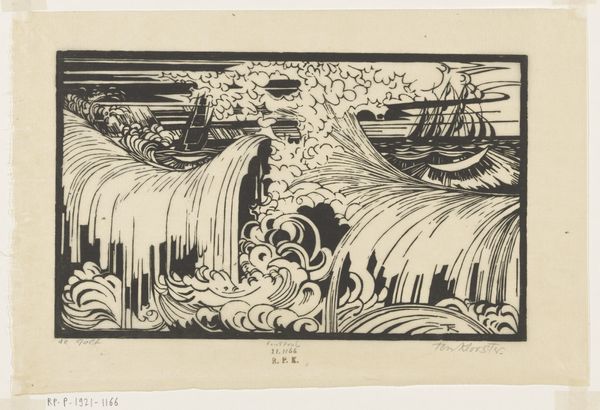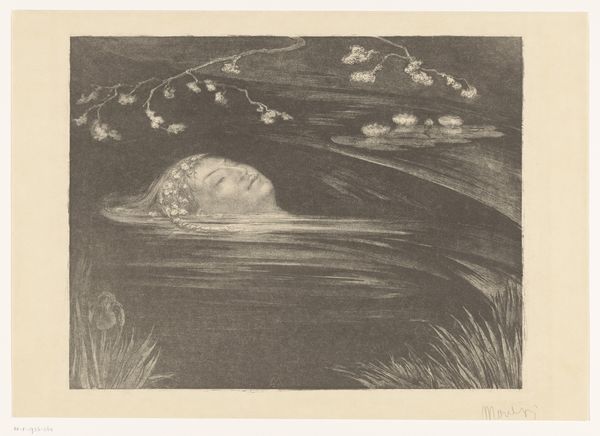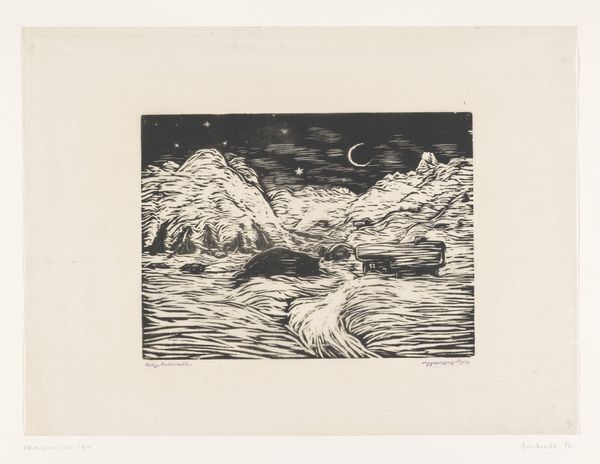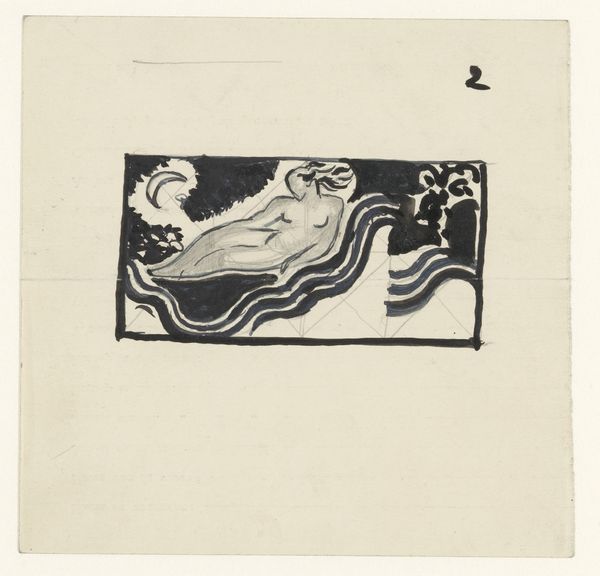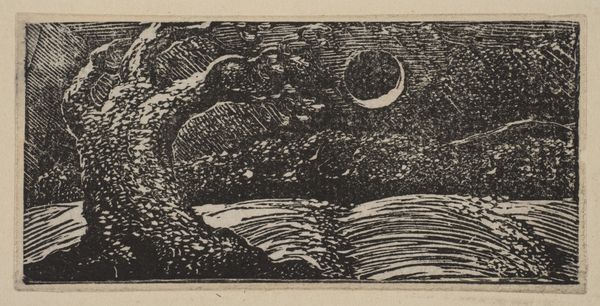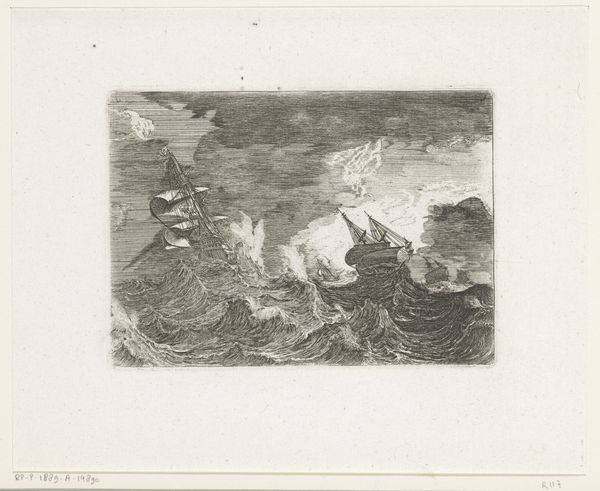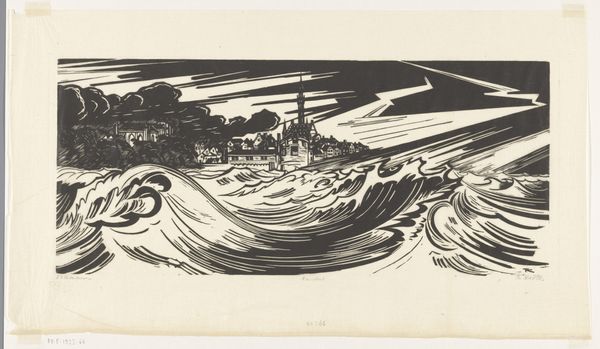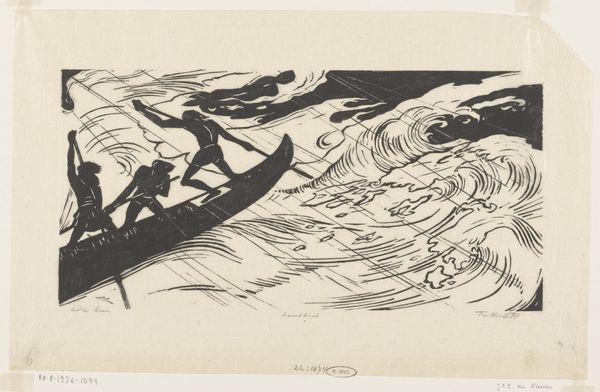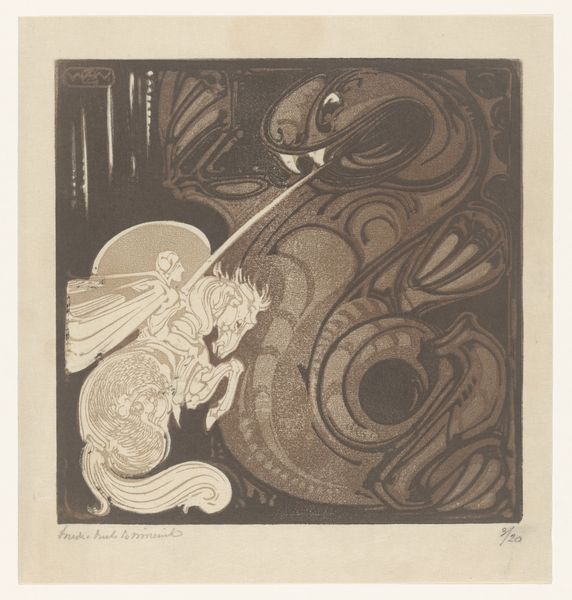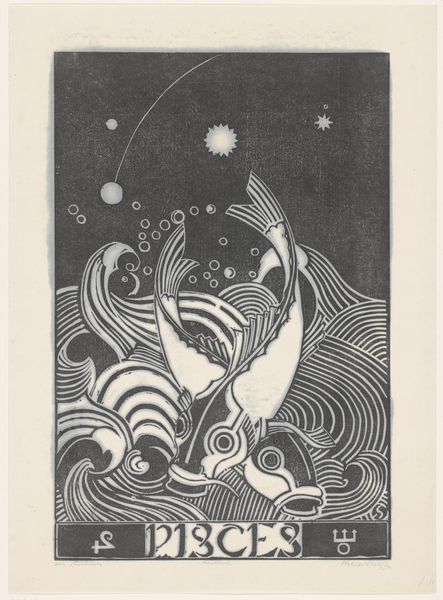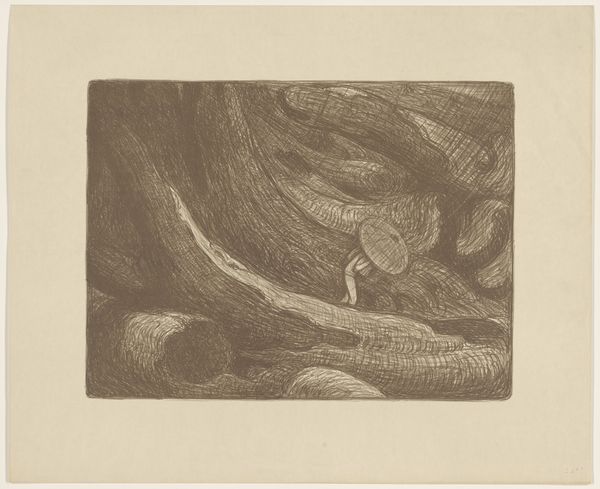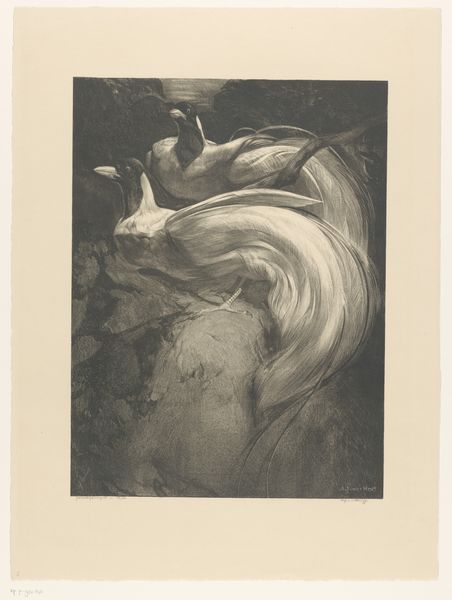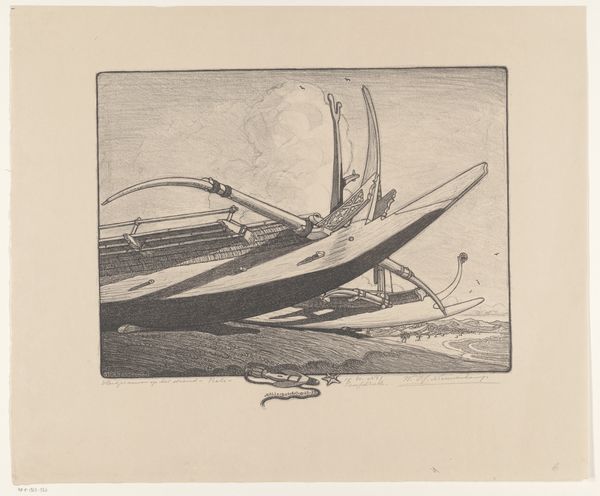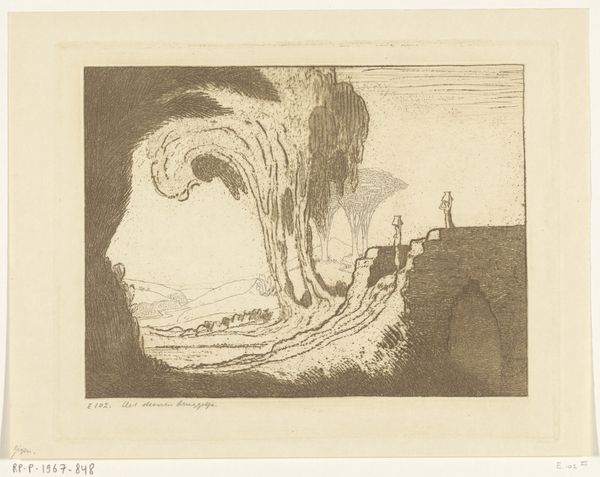
graphic-art, print
#
graphic-art
# print
#
landscape
#
line
Dimensions: height 415 mm, width 540 mm
Copyright: Rijks Museum: Open Domain
Editor: This is "De Vloed," or "The Flood," a print made in 1940 by Bernard Essers. The dark, high-contrast image of a massive wave is quite striking. What do you see in this piece, beyond just a storm at sea? Curator: What I find compelling is the visual language employed to evoke primal anxieties. The wave itself, rendered in stark lines, becomes a symbol of overwhelming, unstoppable force. Do you notice how the flock of birds almost seems to be fleeing something we cannot quite see in the black sky? Editor: Yes, their chaotic movement definitely adds to that feeling of impending doom. Is the single, lighter-colored bird in the upper-right corner important? Curator: Absolutely. It's isolated, almost a beacon of hope or perhaps resilience in the face of annihilation. In many cultures, birds symbolize the soul's journey, offering either liberation or a warning, and their flight is never just a question of geography. Consider the psychological impact of this image on its contemporary audience during wartime, too. Does it speak to a larger cultural fear, would you say? Editor: It certainly does. A singular individual facing overwhelming odds. The wave becomes more than water, a metaphor for societal upheaval perhaps. Curator: Precisely. Essers taps into deeply rooted fears and aspirations. Editor: This piece feels much more layered now. It’s not just a wave; it’s a symbol of a much broader cultural anxiety, but also resilience. Thank you!
Comments
No comments
Be the first to comment and join the conversation on the ultimate creative platform.
